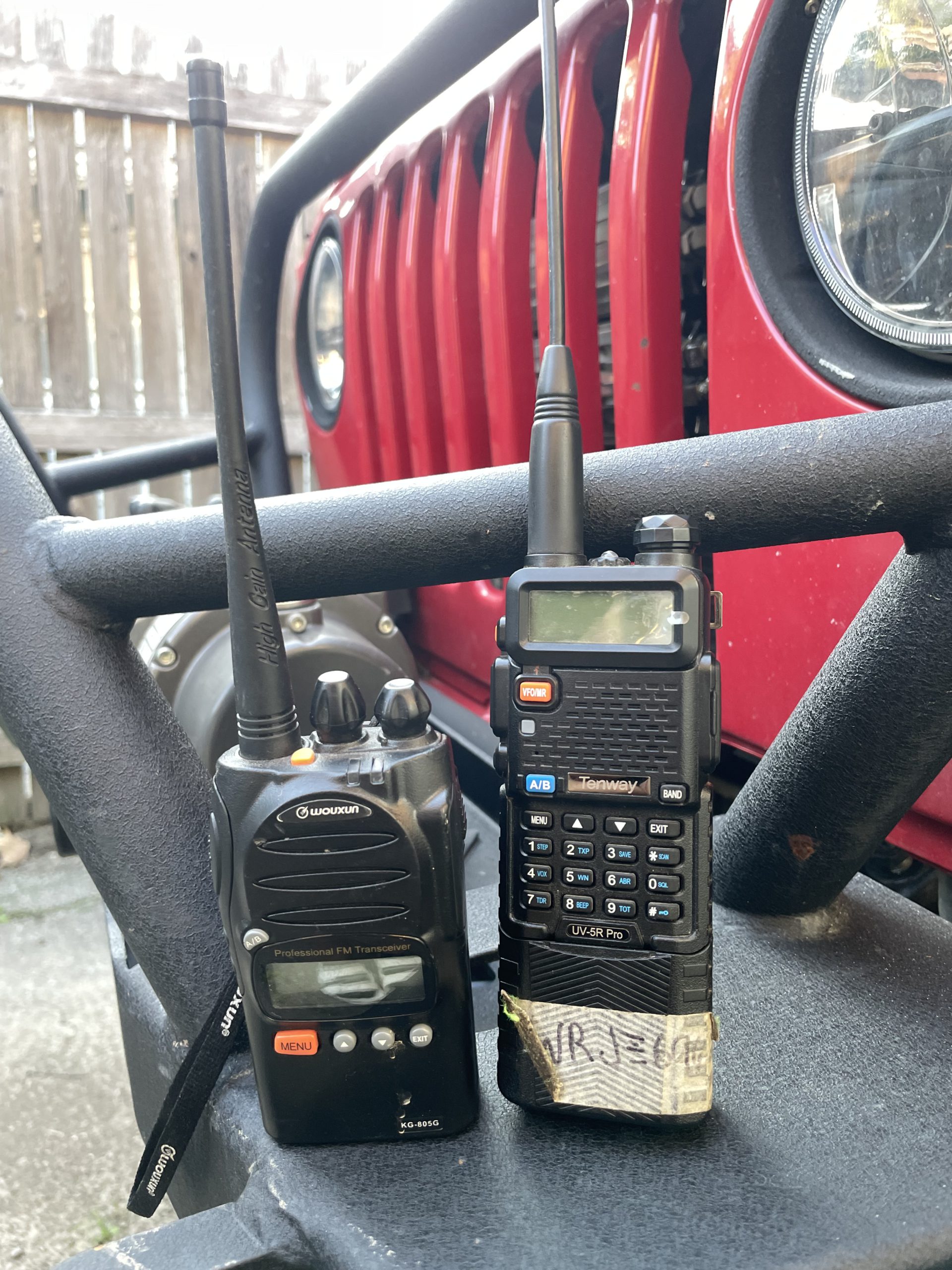Hey, Did you know that is a newer trail communication alternative to the CB?
Whiskey, Romeo, Juliet, Echo, Six, Nin-er, Zee-ro
Well, even when you answer yes or no, It’s time to address the subject and help to educate and promote correct trail communication use as part of our Tread Lightly journey.
That CB alternative is called GMRS and has gained popularity within the Jeepers especially when we can acquire a GMRS HT (hand transceiver) for as low as $25 dollars. Also, Jeep Jamboree joined ventures with Midland to use GMRS as its only events communications equipment, if that tells you something?
What makes the difference between GMRS and CB is the transmitting power, that means better range and voice clarity.
This time I will cover a few things about GMRS radio you should know before investing in this new tech.
I know… you already have yours and ditched your CB for it, no worries I’m not here to judge if not to help and educate. Plus learn from y’all of course.
What’s GMRS?
GMRS stands for;
General
Mobile
Radio
Service
While a “Walkie Talkie on steroids” is a good urban definition.
A suitable technical definition is; land-mobile FM UHF radio service designed for short-distance two-way communication authorized by the FCC and outlined by USC 47 CFR Part 95 subpart E. It operates near the 462 and 467 MHz band frequency of the radio spectrum on channel based service.
Operating band
GMRS operates near the 462 and 467 mHz band in the FM UHF radio spectrum and is sectioned in 30 different frequencies. Typically each radio channel is programmed to one this specific frequency.
- Channels 1 to 22 are overlapped with the Family Radio Service or FSR, this allows the GMRS Radio to communicate with many of the called bubble pack radios sold in department or hobby stores like Wallymart or Cabela’s.
- The remaining 8 channels, 23 to 30 are GMRS and/or repeater channels, are mostly for repeater communications use.
- Must mention that from the 22 main channels, channels 8 to 14 are limited to 5 milliwatts, that low voltage does not allow a good range so is not even worth looking at them when working with GMRS. To what left us with just 15 usable channels plus the Repeater channels.
Privacy not much
Equal to CB, FRS and HAM’ GMRS is a shared service and communications are not private. So always keep in mind that anyone can and will listen to your conversation, it also can jump in to it without being invited, even more, is always someone scanning those frequencies in search of a good subject to listen or talk.
Yes, a privacy tone can be added to each GMRS channel, even some vendors has added extra channels with predetermined channels with privacy codes to make you feel secure but trust me, those channels can be scanned and the privacy tone recorded. But let’s be honest, outdoor enthusiasts do not always hang in the same place with the same people at the same time so the use of a privacy tone is not something we will be using all the time.
Yuup! An FCC ZA-GMRS license is required.
The license cost is $70.00, and can be obtained by any US citizen 18 years and older. A FCC report from last December 2020 suggests this charge be dropped to $35.00 but hasn’t ruled yet, so as today still cost $ 70.00.
- The license covers you and your immediate family. Spouse, sons, brothers-in-law.
- No test required. Just hand your credit card to the government and a call sign is assigned to you in return.
- It has a renewal span of 10 Years.
With the license comes some responsibilities but they are simple, nothing a good law-abiding Jeeper can’t do. Here a few:
- Does not use the line for criminal activity or to attempt against the government.
- Use your call sign at least once during the transmission.
- Avoid interference with others using an adjacent or the same band.
Always think on what the government does to the gas can, keep it classy, less exposure due complaints the better!
What about Range
The GMRS is a short distance line of sight communication system, for the most part, its range is limited to the line of sight so is maybe correct to say that 5 – 6 miles on unobstructed areas is the maximum range when using 5 Watts of power avg. Now, when power, antenna gain, and elevation are combined, things rapidly change and some fellows report ranges up to 26 miles! When 50watts powered units were used. For HT equipped fellows this is different due to the power limitation but the good thing it’s that the FCC allows the GMRS HT to have removable antennas so with a good GMRS tuned antenna range will be improved.
The use of repeaters elevates the range to greater than 40 miles but the use of repeaters is controlled and still is not too many that we can publicly access.



Leave a Reply